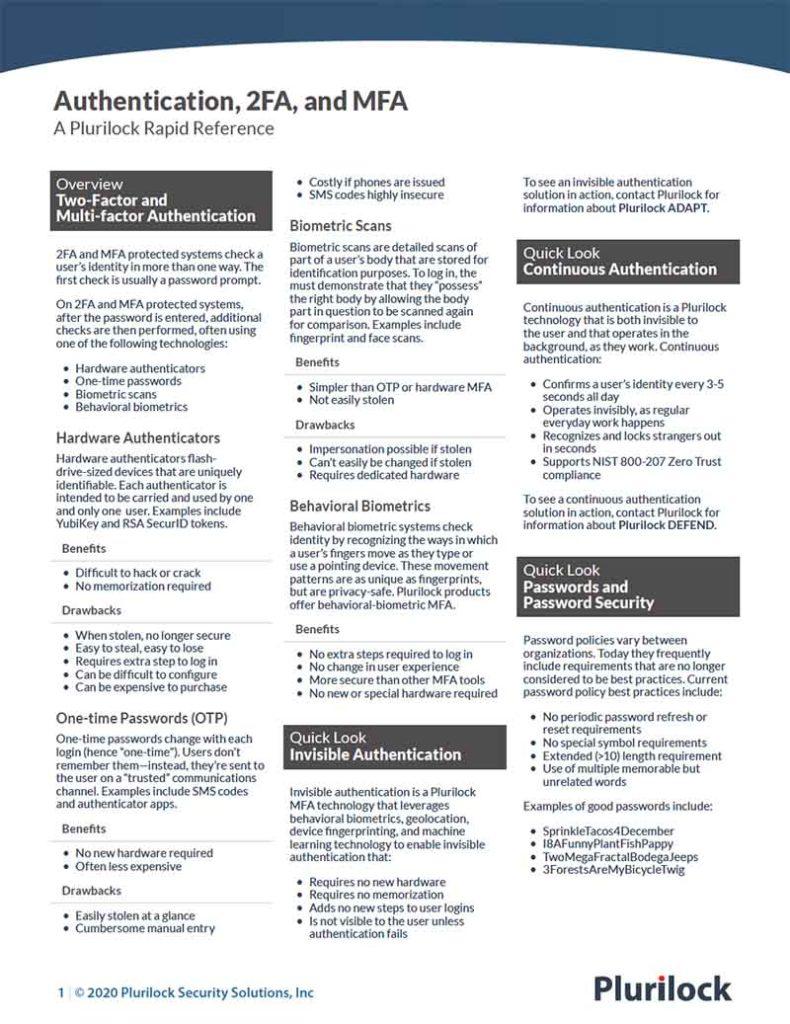Cybersecurity Reference > Glossary
Does Plurilock™ establish our compliance with regulation(s) X, Y, and/or Z?
It's complicated. Compliance is generally an awarded status resulting from the verification that a combination of policies, procedures, roles, and technologies have been implemented.
For this reason, the deployment of any one software tool is unlikely to “result” directly in compliance with any regulation or standard.
With that said, Plurilock ADAPT™ and Plurilock DEFEND™ are designed with the requirements of prominent compliance standards in mind, including PCI-DSS and ISO/IEC 27001, amongst others. Most regulatory bodies and standards recommend or require strong multi-factor authentication to protect user accounts, and Plurilock can assist with meeting these requirements in ways that are generally more cost-effective and user-friendly than those of other, competing solutions.

2FA/MFA Rapid Reference
Authentication at a glance
Download the 2FA/MFA Rapid Reference now:
- 2FA and MFA basics and common solutions
- The benefits and drawbacks of each
- Glossary of authentication terms
2FA/MFA Rapid Reference
- 2FA and MFA basics and common solutions
- The benefits and drawbacks of each
- Glossary of authentication terms















